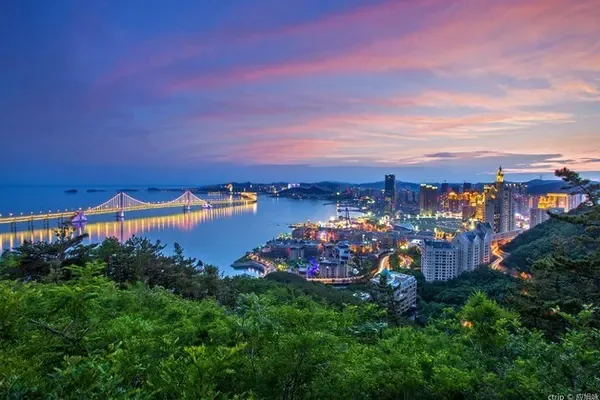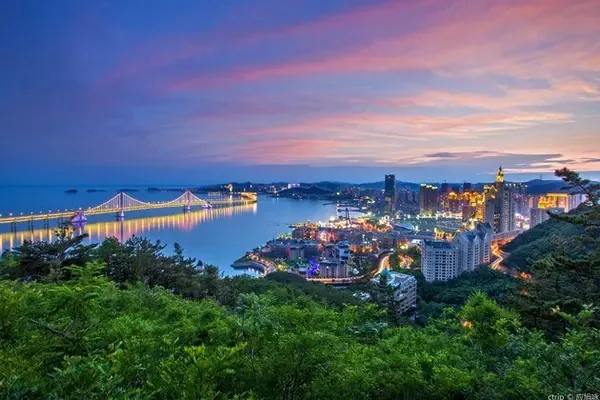Nanchang Auston Golden Wheatfield Business Hotel takes you into Dangka Temple in Yushu, Qinghai
The full name of Dangka Temple (Damkar Lhundrub Dechen Chokhor Ling) is located about ten kilometers east of Jiegu, the capital of Yushu Tibetan Autonomous Region, Qinghai Province. state, solemn and sacred.
Dangka Temple was ordered by Dusong Chinba, the first Dumu Qujieba Chadaodai, to practice in the Godtsang Karmo cave in the Gyeri mountainous area of Kangdi and build a temple. When Bacha Daodai went to the mountains to ask for directions, he met an old man named Bumtar Gronpo. The old man respectfully offered a bowl of milk and guided him along the way. This cave is located on the east side of the Dari Tathagata Temple built by Princess Wencheng when she entered Tibet. The mountain is so steep that only mountain eagles fly there. After Bacha Daodai arrived, he used his magical powers to drill holes in the stone walls of the cave to hang the Dharma drum. At that time, there was no water source nearby, so the water was dug out by the terma method. Bacha Daodai practiced Vajra Haimu in this cave and achieved success. At that time, Vajra Haimu manifested herself on the wall of the cave, and Bacha Daodai left his own handprints and footprints, which are still visible today.
When Bacha Daodai began to look for a place to build a temple nearby, he first arrived in Butsakger. He saw the original Avalokiteshvara Bodhisattva in person, and there was a white Avalokiteshvara stone statue presented by an inhuman being. Then he went to Rage Kyatok, Rawuphu and other places to observe, but there was no good sign of building a temple; so Bacha Daodai returned to the cave where he practiced again and asked for the protection of the Dharma. Afterwards, a bird came and took Doma, who was offering to protect the Dharma, away. Bacha Daodai followed the bird, passed a river along the right side of the cave, and reached the valley opposite the cave. One looks like the heart of Guanyin Bodhisattva when he is lying down, and there is a huge stone (the stone is as big as a room). Asuka parked Doma on the stone, and there were many supernatural and miraculous signs in an instant. At the same time, Asai Buddha Mother (Note: One of the Dharma protectors) appeared to welcome her, expressing her joy. Since then, Asai Buddha Mother has become the Dharma protector of Dangka Temple until now. Near the bottom of the boulder, there is a white mud swamp (Note: Dangka means white mud in Tibetan. This place is very auspicious, and Guru Rinpoche personally blessed this place), so Bacha Daodai built a temple here. When the temple was built, due to the lack of water sources, Bacha Daodai inserted his crutches into the soil, and water gushed out of the ground naturally. (Note: This water source is still an important nectar spring in the temple).
Bacha Daodai began to build the temple around 1190. At that time, his guru Du Songqinba presented him with a large white conch, with the word "A" (Atse) appearing naturally in the snail; and a Buddha statue with the same appearance as Bacha Daodai himself. (Note: There is a saying in Tibet that the heart of this Buddha statue is as warm as the heart of a bird, and its blessing power is equal to that of Bacha Taodai himself). The above two objects (Fa conch and Buddha statue) and the above-mentioned white Guanyin stone statue presented by inhumans are the most important three treasures of Dangka Temple, which have been handed down to this day.
Dangka Temple was founded by Bacha Daodai (the first Du Mu Qujie) and has a history of more than 800 years. From 1958 to the Cultural Revolution, Dangka Temple was severely damaged, and all the temple buildings were destroyed. In 1981, the 18th Dumul Chogyal Rinpoche personally led the reconstruction. It was very difficult in the early stage of reconstruction, and there was no funds at that time. Dumo Rinpoche sold the dzi beads, corals and other personal items offered by his sisters, and then he could hire a car to Suman Township (note: the area rich in wood in Yushu) to exchange for wood. The road is long and the road conditions are very poor. Sometimes the car could not be dragged out of the mud pit, so we had to sleep in the car overnight. And there is no food to satisfy the hunger, fatigue and hunger, and all the twists and turns. After the timber was transported back, and because there was no way to reach the monastery, the convoy had to stop at the foot of the monastery's mountain and carried it by hand. It took many years to complete the reconstruction of the first sutra hall. (Note: The old Seventeen Pillar Sutra Hall in Dangka Monastery is the first sutra hall after Rinpoche personally led the monks to Suman Township to carry it back and built it with bare hands.
Although the reconstruction project is hindered by the shortage of funds, it can only be carried out one after another. However, Dumul Rinpoche's compassionate and ambitious ambition has never been interrupted under difficult and difficult circumstances. In order to be able to serve the monks and set up the public, we have successively completed the Guru Academy, the Guardian Court, and the Retreat Center (Note: There are currently two large retreat centers, one for the practice of the six methods of Nanuo (Mahamudra); the other for the practice of Dzogchen. These two retreat centers can Accommodate 30 lamas at the same time.) and the construction of Buddhist scripture halls of different sizes. In mid-1994, His Holiness the Karmapa Rinpoche went to Hong Kong to propagate the Dharma at the invitation of the Hong Kong Karma Kagyu Center. Since then, disciples from Hong Kong, Xiamen, Shenzhen, Guangzhou, Huizhou, Shanghai and other places along the southern coast have continued to come to seek the Dharma.
From 1981 to the present more than 20 years, Dangka Temple has been reorganized and expanded after several catastrophes. During this period, practitioners continued to gather, and many of them achieved complete success in their practice. Under the guidance of Dumul Rinpoche, the number of monks is increasing, and there are about 200 lamas so far. It is one of the largest Karma Kagyu monasteries in Yushu area.
In 2003, under the conditions of karma, Dumul Rinpoche cultivated monks and benefited the ten directions in order to continue the wisdom of the Dharma Lamp. Started to build a Buddhist academy. At present, the college has completed its construction and officially opened in 2005. After the reconstruction and expansion of the first phase of the Ka Monastery, the second phase began to actively carry out the Sangha education, the great dharma and the benefit of life. Dumo Rinpoche always did not seek happiness for himself, and hoped that all sentient beings would be free from suffering. Thinking of benefiting all sentient beings all the time, Dangkasi, under the leadership of Rinpoche, carried out the whole important task of grandization. 【over】


